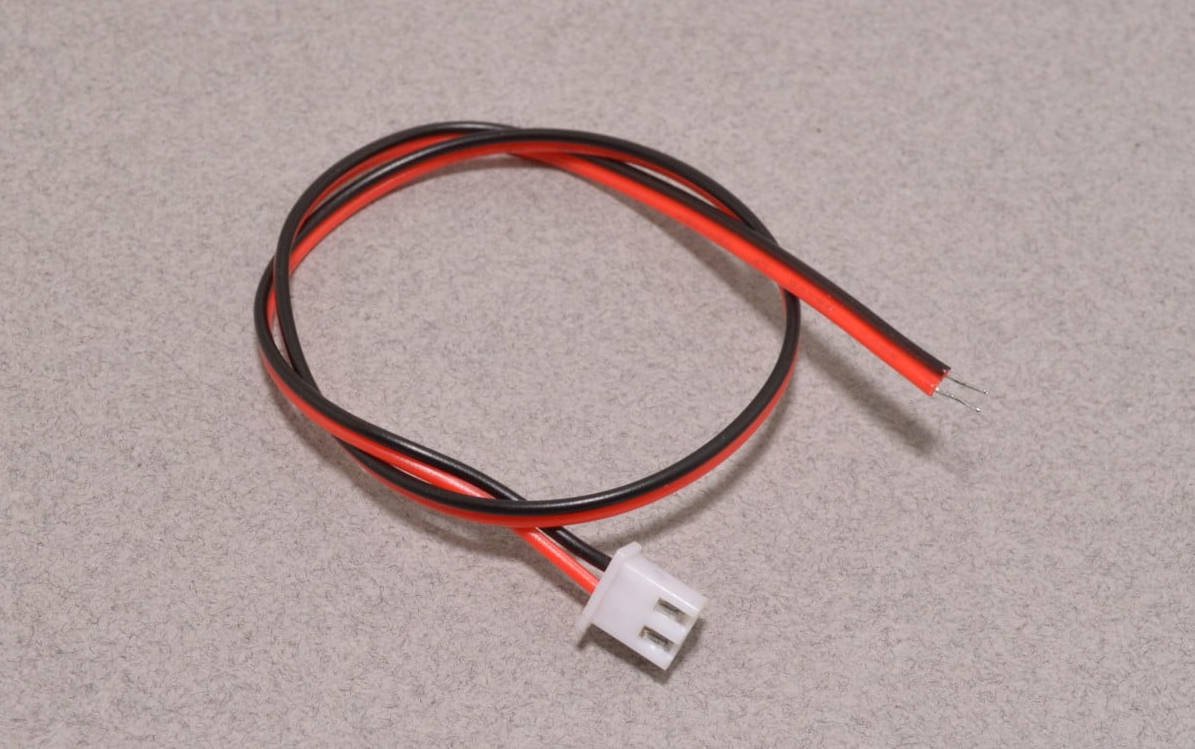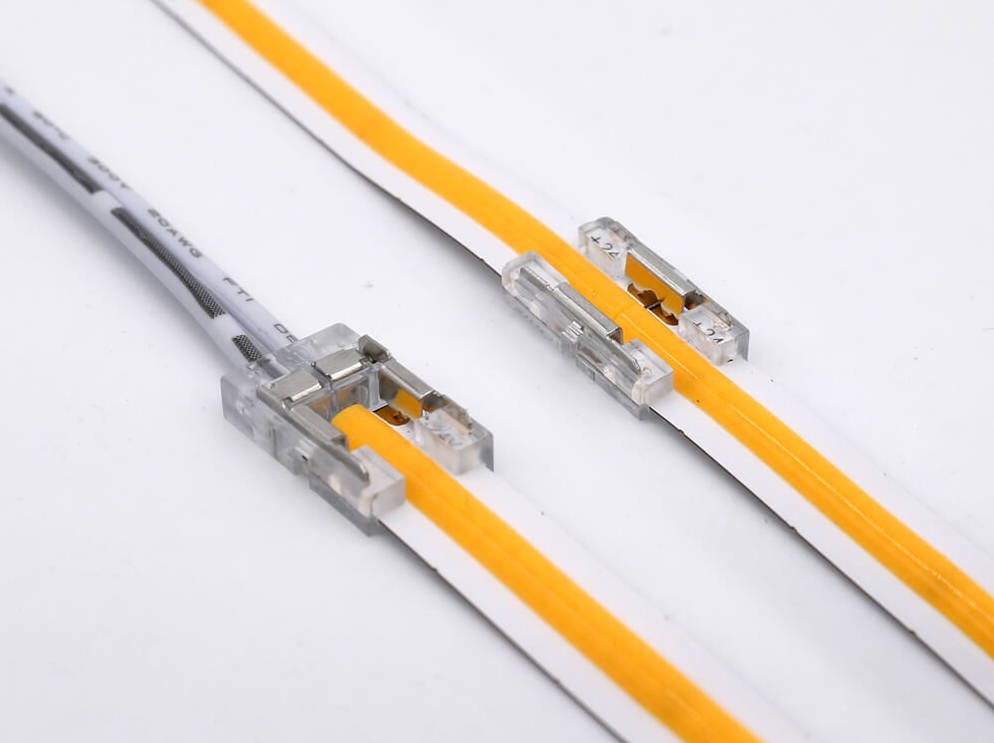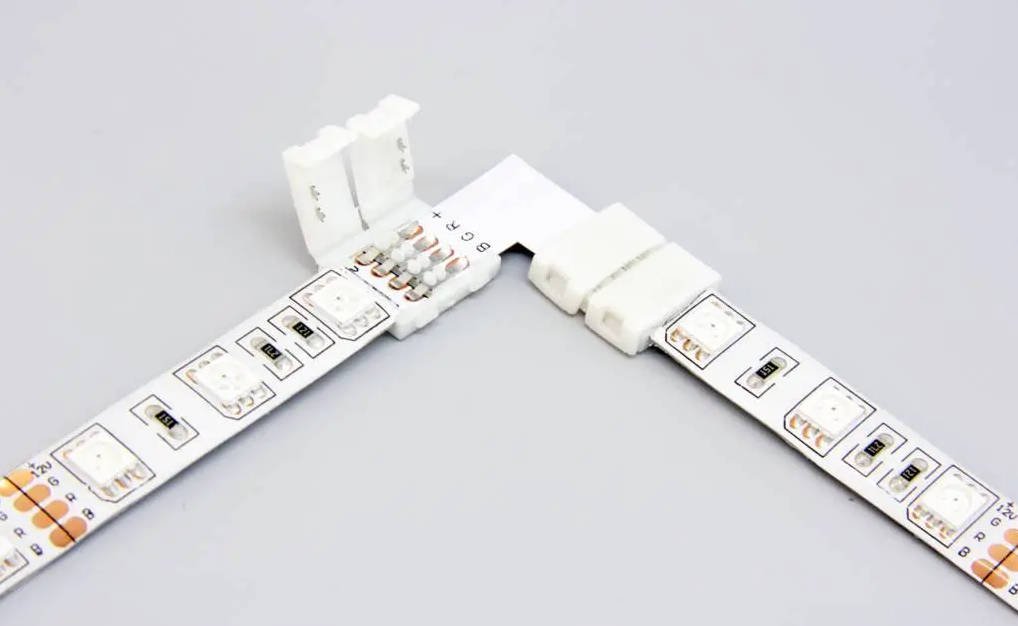Problem: Achieving uniform and aesthetically pleasing lighting with LED strips can be challenging without the right diffusion materials. Uneven lighting can lead to hotspots, glare, and an overall subpar lighting experience.
Agitation: Without effective diffusers, LED strips can produce harsh and inconsistent light, detracting from the intended ambiance and functionality. This inconsistency not only affects the visual appeal but can also impact the longevity and performance of the LED strips themselves.
Solution: Selecting the appropriate diffuser material is crucial for enhancing the light distribution, ensuring even illumination, and maximizing the performance of LED strips. The right diffuser can transform the lighting experience, making it both visually appealing and functionally efficient.
Choosing the best materials for LED strip diffusers is essential for achieving even lighting, enhancing aesthetic appeal, and ensuring the longevity of your LED lighting setup.
In this comprehensive guide, we will explore the various materials used for LED strip diffusers, compare their properties, and provide insights into selecting the right diffuser for your specific lighting needs. Whether you are a DIY enthusiast or a professional installer, understanding these materials will help you make informed decisions for optimal lighting solutions.
Table of Contents
- Understanding LED Strip Diffusers
- Key Materials Used for LED Strip Diffusers
- Comparing the Best Materials for LED Strip Diffusers
- Factors to Consider When Choosing a Diffuser Material
- Innovations in LED Strip Diffuser Materials
- Choosing the Right LED Strip Supplier and Manufacturer
- Conclusion
- Frequently Asked Questions (FAQ)
Understanding LED Strip Diffusers
LED strip diffusers are essential components in LED lighting systems, designed to distribute light evenly and eliminate harsh shadows and glare. They are typically placed over LED strips to soften the light output, creating a more uniform and visually appealing illumination.
Diffusers play a critical role in enhancing the quality of LED lighting by ensuring even light distribution and minimizing unwanted glare and hotspots.

Without diffusers, LED strips can produce intense and concentrated light that may not be suitable for all environments. Diffusers help in blending the light from individual LEDs, providing a consistent and smooth lighting effect that enhances both functionality and aesthetics.
There are various types of diffusers available, each made from different materials that offer unique properties suited to specific lighting applications. Understanding these materials is key to selecting the best diffuser for your LED strip setup.
Key Materials Used for LED Strip Diffusers
The effectiveness of an LED strip diffuser largely depends on the material from which it is made. Each material offers distinct advantages and is suitable for different lighting scenarios. Here, we explore the most common materials used for LED strip diffusers:
Acrylic
Acrylic is one of the most popular materials for LED strip diffusers due to its excellent light diffusion properties and affordability. It is lightweight, easy to mold, and can be produced in various colors and opacities to suit different lighting needs.
Properties and Benefits
- High transparency and excellent light diffusion
- Durable and impact-resistant
- Available in a wide range of colors and finishes
- Cost-effective compared to other materials
Common Applications
- Under-cabinet lighting
- Accent lighting
- Backlighting for displays and signs
Polycarbonate
Polycarbonate is known for its superior durability and impact resistance, making it an excellent choice for environments where the diffuser may be subjected to physical stress. It also offers good light diffusion properties, though it is typically more expensive than acrylic.
Durability and Impact Resistance
- Highly resistant to impact and shattering
- Maintains clarity and diffusion over time
- Suitable for high-traffic areas
Suitable Use Cases
- Commercial lighting applications
- Outdoor LED installations
- Industrial settings
Silicone
Silicone diffusers are prized for their flexibility and ability to diffuse light effectively. They are particularly useful in applications where the LED strips need to conform to curved surfaces or irregular shapes.
Flexibility and Light Diffusion
- Highly flexible, allowing for versatile installations
- Excellent light diffusion, creating a soft and even glow
- Resistant to heat and UV radiation
Ideal Scenarios for Use
- Architectural lighting
- Curved or irregular installations
- Flexible LED strip applications
Frosted Glass
Frosted glass diffusers provide superior light diffusion and a premium aesthetic. However, they are heavier and more fragile compared to plastic alternatives like acrylic and polycarbonate.
Superior Light Diffusion
- Offers exceptional light scattering for a uniform glow
- Creates a high-end, elegant appearance
- Excellent optical clarity
Pros and Cons
- Pros: Superior light quality, aesthetic appeal
- Cons: Heavier, more fragile, higher cost
PET (Polyethylene Terephthalate)
PET is a lightweight and cost-effective material used for LED strip diffusers. While it may not offer the same level of light diffusion as acrylic or polycarbonate, it is suitable for applications where budget and weight are primary considerations.
Lightweight and Cost-Effective
- Affordable compared to other diffuser materials
- Lightweight, making it easy to install and handle
- Available in various thicknesses and colors
Typical Applications
- Residential lighting
- DIY lighting projects
- Basic commercial lighting setups
Comparing the Best Materials for LED Strip Diffusers
When selecting the best material for LED strip diffusers, it’s essential to compare their performance across several key factors:
Light Diffusion Efficiency
The primary function of a diffuser is to spread light evenly. Acrylic and frosted glass excel in light diffusion, providing a uniform glow with minimal hotspots. Polycarbonate also offers good diffusion but may be less effective than acrylic. Silicone, while flexible, provides excellent diffusion in curved applications, whereas PET offers basic diffusion suitable for budget-conscious projects.
Durability and Longevity
Durability is crucial for ensuring that diffusers maintain their appearance and functionality over time. Polycarbonate stands out for its exceptional durability and impact resistance, making it ideal for high-traffic or industrial environments. Acrylic is also durable but may be more prone to scratching. Silicone offers flexibility and longevity in dynamic installations, while frosted glass, though beautiful, is fragile and less suitable for areas where it might be knocked or handled frequently.
Cost-Effectiveness
Cost is always a consideration when choosing materials. PET is the most cost-effective option, making it suitable for large-scale or budget-restricted projects. Acrylic provides a good balance between cost and performance, offering excellent light diffusion at a reasonable price. Polycarbonate is more expensive but offers superior durability, while frosted glass is the priciest option due to its premium qualities.
Ease of Installation
Installation ease varies by material. PET and acrylic are lightweight and easy to cut and install, making them user-friendly for DIY projects. Polycarbonate, while durable, requires careful handling due to its rigidity. Silicone diffusers are highly flexible, allowing for versatile installations on curved surfaces, whereas frosted glass requires more careful handling and secure mounting to prevent breakage.
Factors to Consider When Choosing a Diffuser Material
Choosing the right diffuser material involves evaluating several factors to ensure it meets your specific lighting needs:
Lighting Requirements
Consider the brightness and color temperature of your LED strips. Materials like acrylic and frosted glass are ideal for achieving high levels of brightness and consistent color temperatures, making them suitable for environments where lighting quality is paramount.
Environmental Conditions
Assess the environmental conditions where the LED strips will be installed. In areas with high humidity or temperature fluctuations, materials like polycarbonate and silicone, which offer excellent resistance to environmental stressors, are preferable.
Aesthetic Preferences
Your aesthetic goals will influence the choice of diffuser material. Frosted glass provides a premium and elegant look, while acrylic and polycarbonate offer a modern and clean appearance. Silicone can add a unique, flexible design element, and PET is suitable for more utilitarian or budget-friendly aesthetics.
Budget Constraints
Determine your budget for the lighting project. PET is the most economical choice, followed by acrylic. Polycarbonate and frosted glass are more expensive but offer superior performance and durability. Balancing cost with performance requirements will help you select the most suitable material.
Innovations in LED Strip Diffuser Materials
The LED lighting industry is continuously evolving, with innovations driving improvements in diffuser materials. These advancements enhance light diffusion, durability, and environmental sustainability, offering better performance and new possibilities for lighting design.
Innovations such as advanced polymer composites, smart diffusers, and eco-friendly materials are transforming the LED strip diffuser landscape, leading to enhanced performance and sustainability.
Advanced Polymer Composites
New polymer composites are being developed to enhance the light diffusion and durability of LED strip diffusers. These materials combine the best properties of existing materials, offering improved light scattering, higher resistance to environmental stressors, and longer lifespans.
Smart Diffusers
Smart diffusers incorporate technology such as sensors and connectivity features, allowing for dynamic control of lighting. These diffusers can adjust light diffusion in real-time based on environmental conditions or user preferences, providing customizable and adaptive lighting solutions.
Eco-Friendly Materials
There is a growing emphasis on sustainability in LED strip diffuser materials. Manufacturers are exploring eco-friendly options such as recycled plastics and biodegradable materials. These innovations reduce environmental impact while maintaining performance standards, catering to the increasing demand for green lighting solutions.
Choosing the Right LED Strip Supplier and Manufacturer
Selecting a reputable LED strip supplier and manufacturer is crucial for ensuring the quality and performance of your lighting projects. A reliable supplier can provide high-quality LED strips and diffusers, offer customization options, and support your specific lighting needs.
Factors such as quality assurance, customization options, reputation, and customer support should be considered when choosing an LED strip supplier and manufacturer.
Quality Assurance
Ensure that the supplier adheres to strict quality standards and certifications. High-quality materials and manufacturing processes are essential for producing reliable and durable LED strips and diffusers. Look for suppliers who have certifications such as UL, TUV, RoHS, and Reach, which indicate compliance with industry standards and environmental regulations.
Customization Options
Customization is a key advantage when selecting a supplier. The ability to tailor LED strip connectors, diffuser materials, and other components to your specific requirements can greatly enhance the functionality and aesthetics of your lighting projects. Suppliers that offer custom LED strip connectors and diffusers can provide solutions that perfectly match your design and performance needs.
Reputation and Experience
A supplier’s reputation and experience in the industry are important indicators of their reliability and expertise. Established suppliers with a proven track record are more likely to deliver high-quality products and excellent customer service. Research customer testimonials, case studies, and industry reviews to gauge the supplier’s standing in the market.
Customer Support
Effective customer support is essential for addressing any issues that may arise during the installation or maintenance of LED strips and diffusers. A responsive supplier will offer technical support, provide detailed product information, and assist with troubleshooting to ensure a smooth and successful lighting project.
Case Study: Leading LED Strip Suppliers
Fongkit is a premier LED strip supplier known for its high-quality products and exceptional customer service. With extensive experience in LED strip manufacture and a commitment to innovation, Fongkit offers a wide range of LED strips and custom LED strip connectors tailored to meet diverse lighting needs.
Fongkit’s state-of-the-art LED strip factory utilizes advanced manufacturing technologies to produce reliable and efficient LED strips. Their customization services allow clients to design LED strip connectors and diffusers that perfectly fit their specific applications, whether for residential, commercial, or industrial lighting projects.
By partnering with Fongkit, customers benefit from high-quality LED products, personalized service, and a supplier dedicated to meeting their unique lighting requirements. Fongkit’s reputation for excellence makes them a trusted choice for LED strip suppliers and manufacturers worldwide.
Conclusion
Choosing the best materials for LED strip diffusers is essential for achieving even lighting, enhancing the aesthetic appeal, and ensuring the longevity of your LED lighting installations. Materials such as acrylic, polycarbonate, silicone, frosted glass, and PET each offer unique benefits that cater to different lighting needs and environments.
By understanding the properties and applications of each diffuser material, you can make informed decisions that optimize your lighting setup for both performance and cost-effectiveness. Additionally, partnering with a reputable LED strip supplier and manufacturer like Fongkit ensures that you receive high-quality products and customized solutions tailored to your specific requirements.
As the LED lighting industry continues to innovate, advancements in diffuser materials will further enhance the capabilities and applications of LED strips, providing even more opportunities for creative and efficient lighting designs. Investing in the right diffuser materials and working with trusted suppliers will ensure that your LED lighting projects achieve the desired results, delivering both functionality and visual appeal.
Frequently Asked Questions (FAQ)
1. What is the primary function of an LED strip diffuser?
The primary function of an LED strip diffuser is to spread the light evenly, eliminate hotspots, and reduce glare, resulting in a uniform and aesthetically pleasing illumination.
2. Which material offers the best light diffusion for LED strips?
Acrylic and frosted glass are among the best materials for light diffusion in LED strips, offering excellent light scattering properties that ensure even illumination.
3. Are polycarbonate diffusers more durable than acrylic?
Yes, polycarbonate diffusers are generally more durable and impact-resistant compared to acrylic, making them suitable for environments where the diffuser may be subjected to physical stress.
4. Can I use silicone diffusers for curved LED strip installations?
Absolutely. Silicone diffusers are highly flexible, making them ideal for curved or irregular LED strip installations where standard rigid diffusers may not fit properly.
5. What factors should I consider when selecting a diffuser material?
Consider factors such as light diffusion efficiency, durability, cost-effectiveness, ease of installation, lighting requirements, environmental conditions, aesthetic preferences, and budget constraints.
6. How do custom LED strip connectors enhance my lighting project?
Custom LED strip connectors allow for tailored connections that meet specific electrical and mechanical requirements, ensuring optimal performance, reliability, and seamless integration into your lighting setup.
7. What are the benefits of using PET as a diffuser material?
PET is lightweight, cost-effective, and easy to install, making it suitable for budget-conscious projects and applications where weight is a consideration. While it offers basic light diffusion, it is not as effective as acrylic or frosted glass.
8. Can frosted glass diffusers be used in outdoor LED lighting?
Frosted glass diffusers can be used outdoors if they are properly sealed and protected from environmental factors. However, due to their fragility, they are less commonly used in outdoor settings compared to more durable materials like polycarbonate.
9. What innovations are expected in LED strip diffuser materials?
Innovations include advanced polymer composites, smart diffusers with integrated sensors, and eco-friendly materials that offer improved light diffusion, durability, and sustainability.
10. Why should I choose Fongkit as my LED strip supplier?
Fongkit offers high-quality LED strips and custom LED strip connectors, backed by extensive experience and a commitment to innovation. Their state-of-the-art manufacturing facilities and dedication to customer satisfaction make them a trusted partner for all your LED lighting needs.



